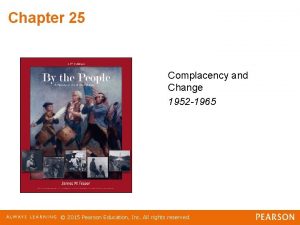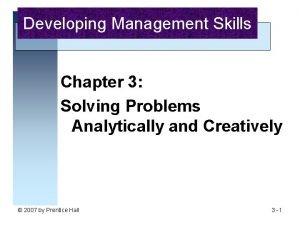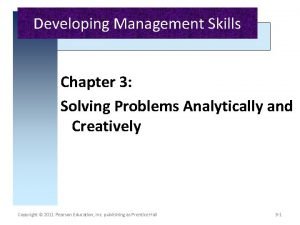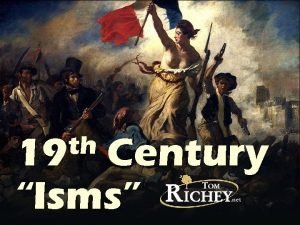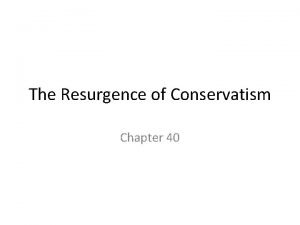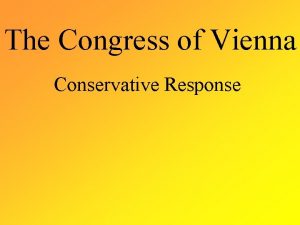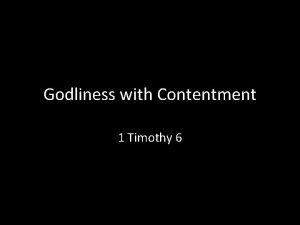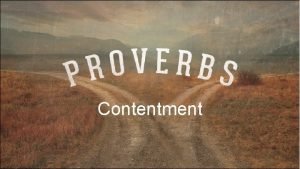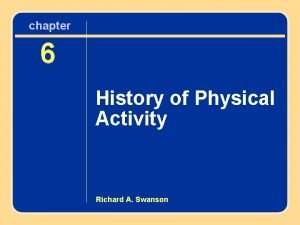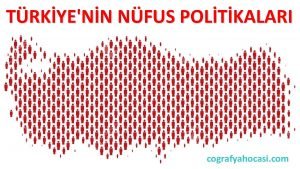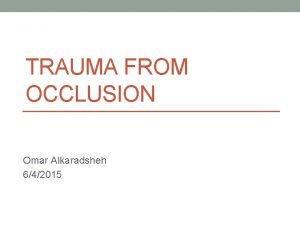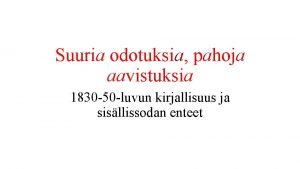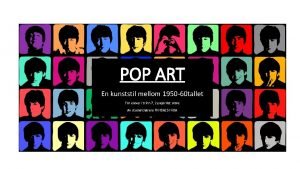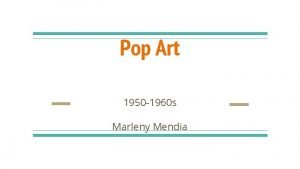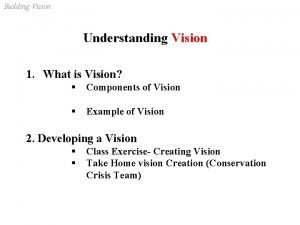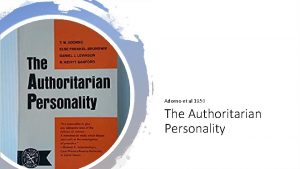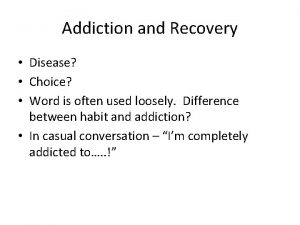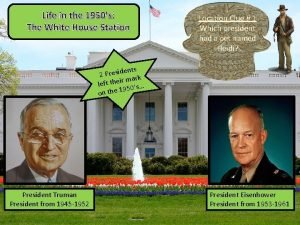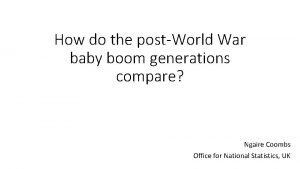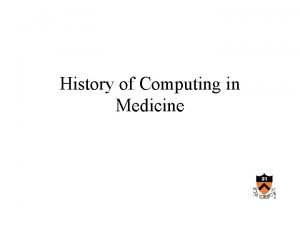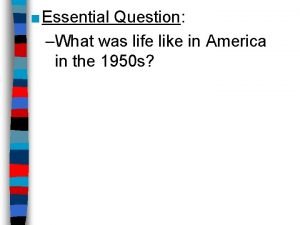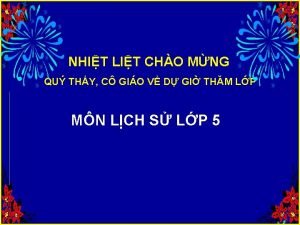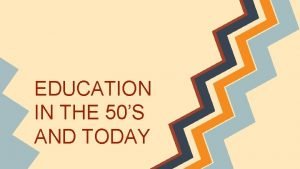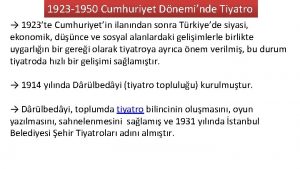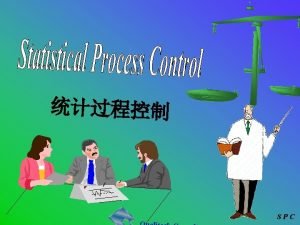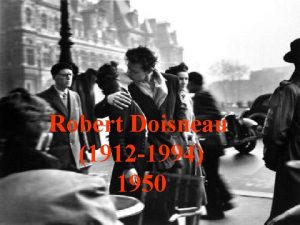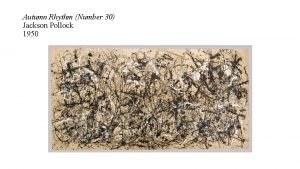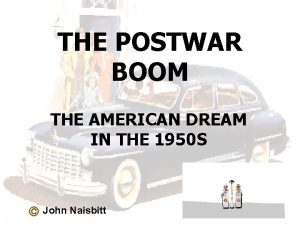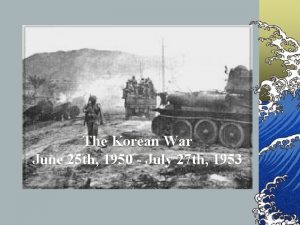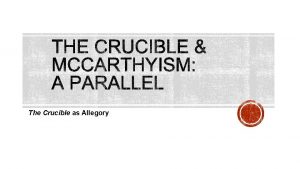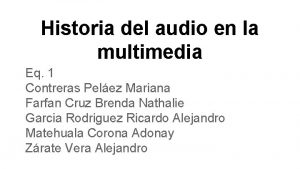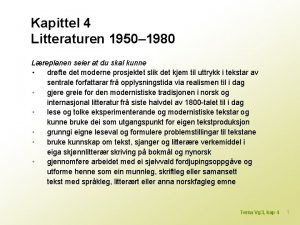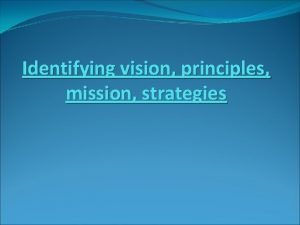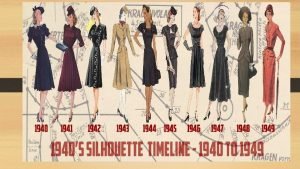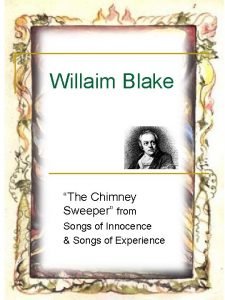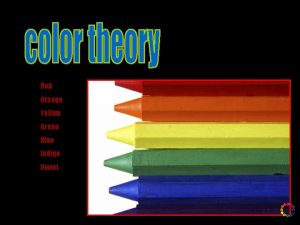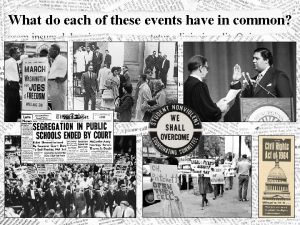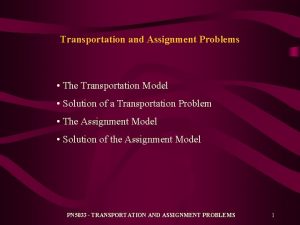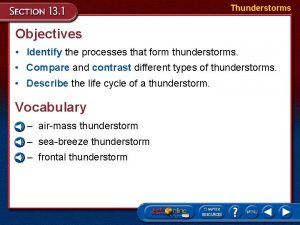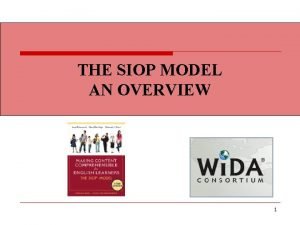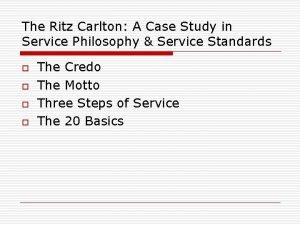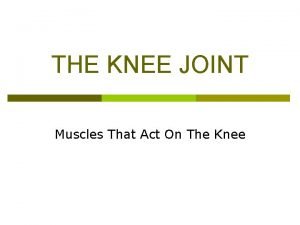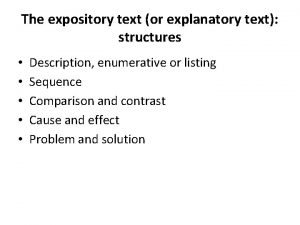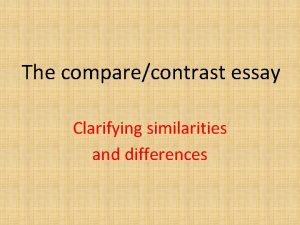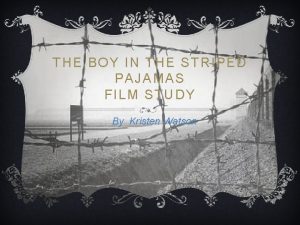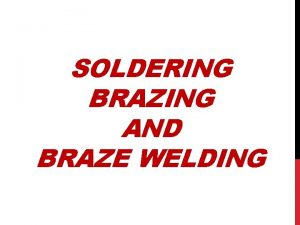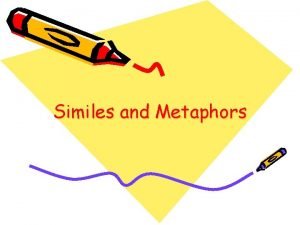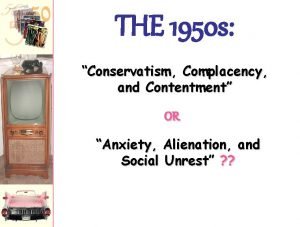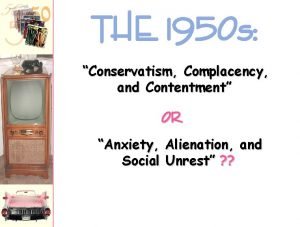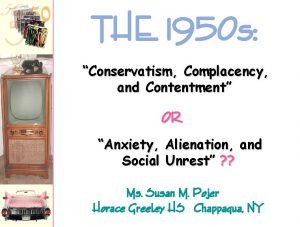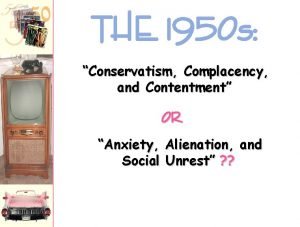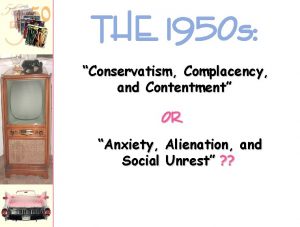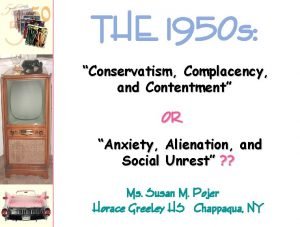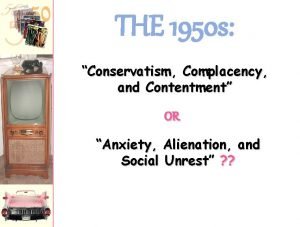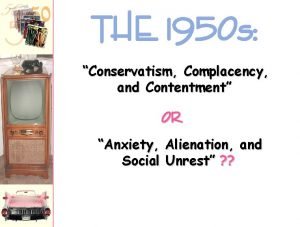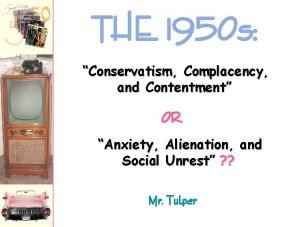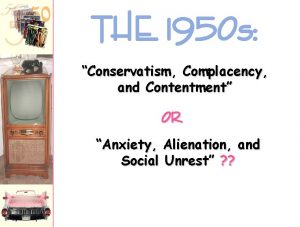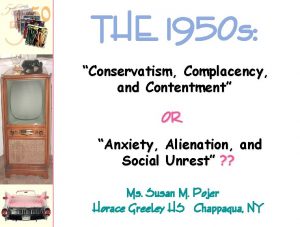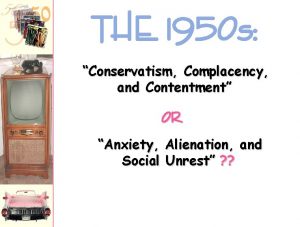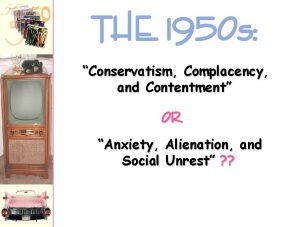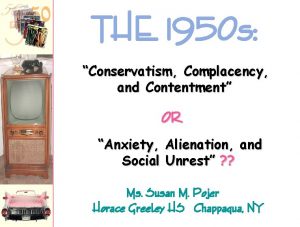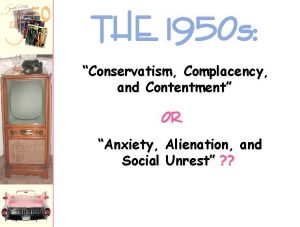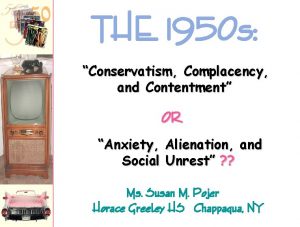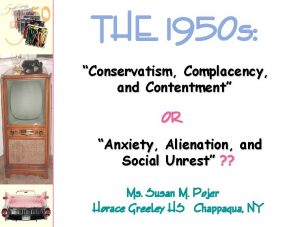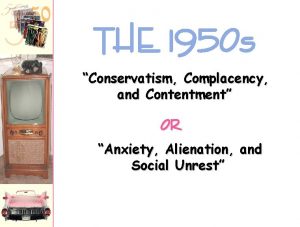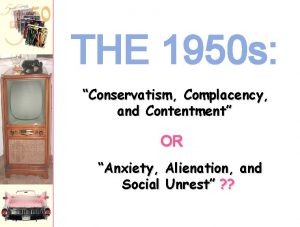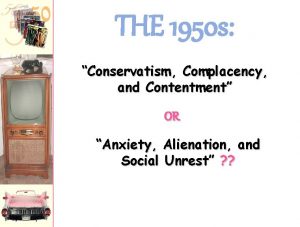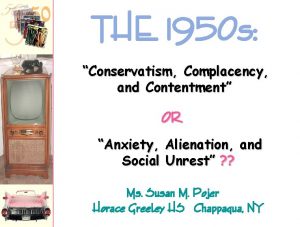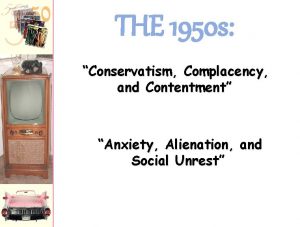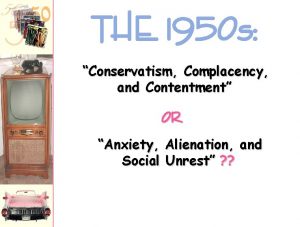THE 1950 s Conservatism Complacency and Contentment OR





























































































































































- Slides: 157

THE 1950 s: “Conservatism, Complacency, and Contentment” OR “Anxiety, Alienation, and Social Unrest” ? ?

1 A. Baby Boom It seems to me that every other young housewife I see is pregnant. -- British visitor to America, 1958 1957 1 baby born every 7 seconds

1 B. Baby Boom Dr. Benjamin Spock and the Anderson Quintuplets

2 A. Suburban Living Levittown, L. I. : “The American Dream” 1949 William Levitt produced 150 houses per week. $7, 990 or $60/month with no down payment.

2 A. Suburban Living: The New “American Dream” k 1 story high k 12’x 19’ living room k 2 bedrooms k tiled bathroom k garage k small backyard k front lawn By 1960 1/3 of the U. S. population in the suburbs.

2 B. Suburban Living SHIFTS IN POPULATION DISTRIBUTION, 1940 -1970 Central Cities Suburbs Rural Areas/ Small Towns 1940 31. 6% 19. 5% 48. 9% 1950 32. 3% 23. 8% 43. 9% U. S. Bureau of the Census. 1960 32. 6% 30. 7% 36. 7% 1970 32. 0% 41. 6% 26. 4%

2 c. Suburban Living: The Typical TV Suburban Families The Donna Reed Show 1958 -1966 Father Knows Best 1954 -1958 Leave It to Beaver 1957 -1963 The Ozzie & Harriet Show 1952 -1966

3 a. Consumerism 1950 Introduction of the Diner’s Card All babies were potential consumers who spearheaded a brand-new market for food, clothing, and shelter. -- Life Magazine (May, 1958)

3 B. Consumerism

4 A. A Changing Workplace Automation: 1947 -1957 factory workers decreased by 4. 3%, eliminating 1. 5 million blue-collar jobs. By 1956 more white-collar than blue-collar jobs in the U. S. Computers Mark I (1944). First IBM mainframe computer (1951). Corporate Consolidation: By 1960 600 corporations (1/2% of all U. S. companies) accounted for 53% of total corporate income. WHY? ? Cold War military buildup.

4 B. A Changing Workplace New Corporate Culture: “The Company Man” 1956 Sloan Wilson’s The Man in the Gray Flannel Suit

5 A. The Culture of the Car registrations: 1945 25, 000 1960 60, 000 2 -family cars doubles from 1951 -1958 Pink Cadillac 1959 Chevy Corvette 1956 Interstate Highway Act largest public works project in American history! Å Cost $32 billion. Å 41, 000 miles of new highways built.

5 C. The Culture of the Car The U. S. population was on the move in the 1950 s. NE & Mid-W S & SW (“Sunbelt” states) 1955 Disneyland opened in Southern California. (40% of the guests came from outside California, most by car. ) Frontier Land Main Street Tomorrow Land

5 B. The Culture of the Car America became a more homogeneous nation because of the automobile. First Mc. Donald’s (1955) Baseball games Diner’s & Drive-in’s Drive-In Movies

Results Mobility ¢ ¢ ¢ ¢ Stimulated production & jobs in other areas Automobile accidents Pollution increased Upper & middle classes suburbs Increased pop. West More leisure time in recreational places More dependency on oil

“The Golden Age” of Television 1946 1950 7, 000 TV sets in the U. S. 50, 000 TV sets in the U. S. Mass Audience TV celebrated traditional American values. Truth, Justice, and the American way!

6 B. Television – The Western Davy Crockett King of the Wild Frontier Sheriff Matt Dillon, Gunsmoke The Lone Ranger (and his faithful sidekick, Tonto): Who is that masked man? ?

6 C. Television - Family Shows Glossy view of mostly middle-class suburban life. But. . . I Love Lucy Social Winners? . . . The Honeymooners AND… Loosers?

Teen Culture: “ROCK ‘N ROLL” In the 1950 s the word “teenager” entered the American language. By 1956 13 mil. teens with $7 bil. to spend a year. "definite danger to the security of the United States. " His actions and motions were called "a strip-tease with clothes on" Even Frank Sinatra opined: "His kind of music is deplorable, a rancid smelling aphrodisiac. It fosters almost totally negative and destructive reactions in young people. " Elvis Presley “The King” symbol of teenage rebellion

Presley was considered by some to be a threat to the moral well-being of young women, because "Elvis Presley didn’t just represent a new type of music; he represented sexual liberation. " psychologists feared that teenage girls and boys could easily be "aroused to sexual indulgence and perversion by certain types of motions and hysteria, "

Teen Culture “Juvenile Delinquency” 1951 J. D. Salinger’s A Catcher in the Rye Originally published for adults, it has since become popular with adolescent readers for its themes of teenage confusion, angst, alienation, and rebellion. Marlon Brando in The Wild One (1953) James Dean in Rebel Without a Cause (1955)

Teen Culture The “Beat” Generation: Lit • a perceived underground, anti-conformist youth movement in New York • celebrated non-conformity and spontaneous creativity

7 D. Teen Culture Behavioral Rules of the 1950 s: U Obey Authority. U Control Your Emotions. U Don’t Make Waves Fit in with the Group. U Don’t Even Think About Sex!!!

8 A. Religious Revival Today in the U. S. , the Christian faith is back in the center of things. -- Time magazine, 1954 Church membership: 1940 64, 000 1960 114, 000 Television Preachers: 1. Catholic Bishop Fulton J. Sheen “Life is Worth Living” 2. Methodist Minister Norman Vincent Peale The Power of Positive Thinking 3. Reverend Billy Graham ecumenical message; warned against the evils of Communism.

8 B. Religious Revival Hollywood: apex of the biblical epics. The Robe 1953 The Ten Commandments 1956 Ben Hur 1959 It’s un-American to be un-religious! -- The Christian Century, 1954

9 A. Well-Defined Gender Roles The ideal modern woman married, cooked and cared for her family, and kept herself busy by joining the local PTA and leading a troop of Campfire Girls. She entertained guests in her family’s suburban house and worked out on the trampoline to keep her size 12 figure. -- Life magazine, 1956 Marilyn Monroe The ideal 1950 s man was the provider, protector, and the boss of the house. -- Life magazine, 1955 1956 William H. Whyte, Jr. The Organization Man A a middle-class, white suburban male is the ideal.

9 B. Well-Defined Gender Roles Changing Sexual Behavior: Alfred Kinsey: 1948 Sexual Behavior in the Human Male 1953 Sexual Behavior in the Human Female v Premarital sex was common. v Extramarital affairs were frequent among married couples. Kinsey’s results are an assault on the family as a basic unit of society, a negation of moral law, and a celebration of licentiousness. -- Life magazine, early 1950 s

10 A. Progress Through Science 1951 -- First IBM Mainframe Computer 1952 -- Hydrogen Bomb Test 1953 -- DNA Structure Discovered 1954 -- Salk Vaccine Tested for Polio 1957 -- First Commercial U. S. Nuclear Power Plant 1958 -- NASA Created 1959 -- Press Conference of the First 7 American Astronauts

10 B. Progress Through Science 1957 Russians launch SPUTNIK I 1958 National Defense Education Act

10 C. Progress Through Science UFO Sightings skyrocketed in the 1950 s. War of the Worlds Hollywood used aliens as a metaphor for whom ? ?

10 D. Progress Through Science Atomic Anxieties: “Duck-and-Cover Generation” Atomic Testing: 1946 -1962 U. S. exploded 217 the nuclear weapons over Pacific and in Nevada.

The 50 s Come to a Close 1959 Nixon-Khrushchev “Kitchen Debate” Cold War -----> Tensions <----- Technology & Affluence

Class Discussion Topic: The postwar era witnessed tremendous economic growth and rising social contentment and conformity. Yet in the midst of such increasing affluence and comfortable domesticity, social critics expressed a growing sense of unease with American culture in the 1950 s. Assess the validity of the above statement and explain how the decade of the 1950 s laid the groundwork for the social and political turbulence of the 1960 s.

Unit 12 Civil Rights and Women’s Rights We Must Learn To Live Together As Brothers Or Perish Together As Fools. "From Rosa to Rodney"

Aim: Did African Americans take the right course of action to try to achieve equality? Do now: Is it possible for there to be equality in the United States? Why or Why not?

Steps to Racial Equality ¢ 1. Emancipation Proclamation – freed slaves in states of rebellion ¢ 2. - 13 amendment – abolish slavery l 14 amendment – due process, equal protection l 15 amendment – voting rights

¢ 3. NAACP – (1909) use legal action to achieve equality ¢ 4. Brown vs. Board of Ed – overturned Plessy vs. Ferguson – segregation is illegal ¢ 5. Little Rock Arkansas – federal troops used to enforce integration


Rosa Parks


¢ 6. Sit ins and freedom rides Rosa Parks Movements, protests to gain equality ¢ 7. March on D. C. – 1963 – 250, 000 people “ I have a dream” speech

¢ 8. Voting Rights Act – 1965 – outlaws literacy tests ¢ 9. Civil rights Act – 1965 – ends segregation in public places

¢ NAACP – 1909 l. WEB Dubois, Thurgood Marshall l. Equality through legal action l

¢ Black Muslims l 1930 l. Elijah Mohammed l. Form a separate nation, spread Islam

Malcolm X

¢ Southern Christian Leadership Conference l 1957 l. Martin Luther King Jr. l. End segregation l. Use civil disobedience


¢ Black Panthers l 1966 l. Huey Newton l. Protect African American interests


Aim Has the Women’s movement for equality become a reality?

Women’s Liberation Movement ¢ Betty Friedan l“The Feminine Mystique” 1963 ldenied that all women were happy house wives l. As capable as men l 1966 (NOW) – National Organization of Women – take action to bring American women into full participation in mainstream

¢ Gloria Steinem – magazine MS. l. Devoted to feminism – and issues of the women’s movement

¢ Margaret Sanger – nurse l Founder of the Birth Control movement l Planned Parenthood foundation l Objected to women as sex objects

¢ Margaret Mead – said women’s status was due to sociological factors not biology

Results ¢ Education – 1972 Equal Access to Education Act l Cannot discriminate based on sex l Fair admissions to military, law, medical school


EQUAL RIGHTS AMENDMENT ¢ Equality of rights under the law shall not be denied or abridged by the United States or by any State on account of sex. ¢ Passed the House and the Senate ¢ Did not pass 2/3 of state legislatures ¢ Backlash by conservative women's groups.


¢ Employment – equal employment l. Laws about maternity leave and child care l. Equal Pay Act – 1963 same wages as men l. Civil Rights Act – bans discrimination based on sex

Court Cases ¢ Roe vs. Wade – 1973 l. Gave women the right to abort a fetus l. Overturned state laws prohibiting abortions

¢ Webster vs. Reproductive Health Services l 1989 l. Supreme Court said states could pass laws restricting abortions

¢ Planned Parenthood vs. Casey – 1992 l. Penn law l. Women need to receive information about childbirth l. Must wait 24 hrs before an abortion l. Supported Roe vs. Wade

Aim: How did JFK try to improve American society in the 1960’s?



JFK’s Domestic Policies 1. 2. 3. 4. New Frontier - medical care, improvements in education, urban reform Civil Rights – supported equality, worked with MLK Apollo Program – space race – 1962 John Glenn orbits the earth Alliance for progress – offered grants and loans to Latin America to help economy and

ALLIANCE FOR PROGRESS PRESIDENT AND MRS. KENNEDY CONGRATULATE THE SON OF A NEW HOME OWNER AT LA MORITA RESETTLEMENT PROJECT NEAR CARACAS, VENEZUELA. “THEREFORE I HAVE CALLED ON ALL PEOPLE OF THE HEMISPHERE TO JOIN IN A NEW ALLIANCE FOR PROGRESS -- ALIANZA PARA PROGRESO -- A VAST COOPERATIVE EFFORT, UNPARALLELED IN MAGNITUDE AND NOBILITY OF PURPOSE TO SATISFY THE BASIC NEEDS OF THE AMERICAN PEOPLE FOR HOMES, WORK AND LAND, HEALTH AND SCHOOLS - TECHO, TRABAJO Y TIERRA, SALUD Y ESCUELA. ” JOHN F. KENNEDY, MARCH 13, 1961


Domestic Policies ¢ Peace Corps. – American Volunteers sent abroad to help people l. Africa, Asia, Latin America

IN HIS INAUGURAL ADDRESS OF JANUARY 20, 1961, PRESIDENT JOHN F. KENNEDY CHALLENGES A NEW GENERATION OF AMERICANS TO JOIN ". . . A GRAND GLOBAL ALLIANCE. . . TO FIGHT TYRANNY, POVERTY, DISEASE, AND WAR. . . " KENNEDY CONTINUES IN HIS SPEECH, "TO THOSE PEOPLE IN THE HUTS AND VILLAGES ACROSS THE GLOBE STRUGGLING TO BREAK THE BONDS OF MASS MISERY, WE PLEDGE OUR BEST EFFORTS TO HELP THEMSELVES. "


Kennedy’s Foreign Policy A move from “Massive Retaliation” to “Flexible Response” ¢ Focus on building conventional, rather than nuclear weapons ¢ Creation of the “Green Berets” ¢

Foreign Policy ¢ Bay of Pigs – 1961 – Americans train Cuban exiles, but abandon them the day of the attack ¢ Berlin Wall – 1961 – Soviets build wall l. US pledges support to West Berlin


Foreign Policy ¢ Support for South Vietnam – sent advisors and aid to try and contain communism ¢ Cuban Missile Crisis – 1962 – brink of nuclear war l. Russian missiles in Cuba

DECLASSIFIED 1962 MAP SHOWING THE DISTANCES NUCLEAR ARMED MISSILES WOULD GO IF FIRED FROM CUBA. ALMOST ALL MAJOR US POPULATION CENTERS WERE WITHIN RANGE. MAPS LIKE THIS CONVINCED JFK THAT THE SOVIET MISSILES MUST BE REMOVED FROM CUBA.


AERIAL PHOTOGRAPHS FROM U. S. SPY PLANES LEFT NO DOUBT THAT THE RUSSIANS WERE INSTALLING NUCLEAR MISSILES IN CUBA AIMED AT THE U. S.

JFK HAD TWO CHOICES OF HOW TO DEAL WITH THE SITUATION IN CUBA: FIRST: HE COULD ORDER AIRSTRIKES ON THE MISSILE SITES IN CUBA AND RISK AN ALL OUT NUCLEAR WITH THE USSR SECOND: HE COULD ORDER A NAVAL BLOCKADE AND STOP SOVIET SHIPS FROM BRINGING IN MISSILES AND OTHER EQUIPMENT. NO ONE KNEW HOW THE RUSSIANS WOULD REACT TO THIS. HE CHOSE THE NAVAL BLOCKADE

Beginnings of Detente Détente: the easing of tensions between the USA and USSR ¢ Attempting to “cool down” the Cold War ¢ “Hot Line” created between Washington and Moscow ¢ Limited Test Ban Treaty prohibited nuclear testing in the atmosphere ¢

JFK’s Assassination ¢ November 22, 1963 ¢ Dallas, Texas ¢ Warren Commission investigated his murder ¢ Lee Harvey Oswald, Jack Ruby

Aim: What were the goals of Johnson’s “Great Society” and what were its limits? Do Now: What was the name of JFK’s Domestic Program. What is the biggest social problem facing the U. S. today?

Lyndon Baines Johnson Civil Rights Act of 1964 - ends segregation in public facilities ¢ Equal Employment Opportunity Commission (EEOC) ¢ Michael Harrington “The Other America” ¢ Impetus for the “Great Society” ¢

The Great Society ¢ ¢ ¢ ¢ Aid Education Health Care Poverty Culture Dept of Transportation Dept of Housing and Urban Development Voting Rights Bill 24 th Amendment

¢ Medicare – 1965 - Provided healthcare for aged ¢ Civil Rights Act – banned racial discrimination in public places ¢ Voting Rights Act – guaranteed equal voting rights

¢ Aid to Cities – Housing and Urban Development Act ¢ Aid to Education – funds to schools to help raise test scores ¢ War on Poverty – created Job Corps to help train the unemployed

Limits of the Great Society A picture is worth a thousand words Society was too turbulent to enact massive change

What factors caused the downfall of the Great Society? ¢ The cost of the war in Vietnam The cost in $$ l The cost in lives l The big protest movement l l Massive upheavals in society • Civil Rights Movement • Chaos in the Democratic Party

Aim: How did the US become involved in Vietnam? Do Now: What do you know about the war in Vietnam?

Conditions before US involvement ¢ Since the 19 th century France controlled Vietnam ¢ 1954 – forces of Ho Chi Minh defeated French ¢ Geneva accords divide Vietnam 17 th parallel ¢ N and S agree to hold elections to reunite the country ¢ 1956 S Vietnam refuses to hold the elections

What was the Debate? ¢ American politicians feared parts of S. E. Asia would fall to communism ¢ Reasons for involvement l. Prevent spread of communism l. Protect position as a superpower

Gulf of Tonkin Resolution ¢ August 1964– USS Maddox reported being fired upon ¢ Led to the Resolution ¢ President could take any measures necessary to repel an armed attack against the forces of the US

US Bombs North Vietnam

HOMEWORK DUE FRIDAY Find a member of your family or a close relation who was alive during the Vietnam War (15 or older) ¢ Create 8 questions to ask them about their memories or whatever they remember about the war ¢ Interview answers and questions must be typed. This does not have to be verbatim. ¢

Would you volunteer to go to war? Would you go if you were drafted? Would you protest against the war?

Effects in the US ¢ US divided between Hawks and Doves ¢ Student protests – sit ins, burn draft cards, Draft Resisters – 10, 000 fled the country, college ¢ Counter Culture – hippies, music, drug use



¢ Students protest about Vietnam War ¢ Kent State University May 2, 1970 ¢ National Guard Troops open fired on a crowd ¢ Four killed ¢ Nine wounded



Aim: How did the policies of Richard Nixon bring an end to the war in Vietnam? ¢ Do Now: What do you know about Nixon?


Richard Nixon 1969 - 1974 ¢ Loss to Kennedy in 1960 ¢ Came back in 1969 to win!! ¢ “ We have endured a long night…. let us gather the light”

Nixon’s Foreign Policy

Vietnam War ¢ Vietnaminization – shift the burden of war to the South Vietnamese ¢ 1973 – Paris Peace Accords – end US involvement in Vietnam ¢ 1975 – South Vietnam fell to communism

Re-Opening Relations With China ¢ 1971 ¢ Visited China and opened normal relations ¢ Toured the Great Wall ¢ Met Mao Zedong ¢ Agreed on scientific and cultural exchanges


Visit to Moscow ¢ 1972 ¢ 1 st to visit since WWII ¢ Marked beginning of DÉTENTE ¢ DÉTENTE – relaxation of tension between the superpowers


SALT ¢ Strategic Arms Limitation Talks ¢ Restricted the # of nuclear warheads and missiles that each country could build

Domestic Policy ¢ New Federalism – decrease power of the Federal gov’t l. Give power back to the state and local gov’t ¢ Economy – Stagflation – inflation up and employment up

Aim: Did the events at Watergate strengthen or weaken the US government?

Watergate

¢ Supreme Court showed its power - made Nixon hand over the tapes – l 1974 – US vs. NIXON – executive privilege – court ruled that no one is above the law ¢ Role of press – uncovering misconduct and informing the public

Impact of Watergate ¢ Lowered public confidence in public officials ¢ Proved that checks and balances works ¢ Two party system works ¢ Congress passed new laws to curb Presidential powers ¢ Gov’t based on laws not individuals

Aim: How did Ford and Carter lead the nation? ¢ DO Now: How did Nixon’s actions as president impact the nation?

FORD 1974 -1977

Domestic Policy ¢ Economic Concerns – US suffers from high unemployment and high inflation ¢ Problems with oil prices – Arab Israeli War

Nixon Pardoned ¢One of Fords first actions as President is to pardon Richard Nixon for all offenses against the United States. ¢Controversial ¢Wanted the nation to


Foreign Policy ¢ Indochina Falls 1975 – S. Vietnam and Cambodia become communist l Congress refuses to give money l Sent troops to rescue U. S. ship in Cambodia ¢ Helsinki Accords – 35 nations - greater cooperation between east and west - Respect human rights

Carter 1977 – 1981 (Dem)

Domestic Policy ¢ Dept of Energy – solar power ¢ Creation of the Environmental Protection Agency (EPA) ¢ Rachel Carson – wrote Silent Spring ¢ Earth Day ¢ Nuclear Power – three mile island

Domestic Policy ¢ Increase oil prices ¢ Tax on cars that wasted gasoline- Nat’l Energy Act ¢ Cut Federal Spending to combat Stagflation

Foreign Policy Camp David Accords – 1978 made peace with Israel (Menachem Begin) and Egypt (Anwar el-Sadat) ¢ Revolution in Iran – Ayatollah Khomeini turns Iran into islamic state ¢ Nov 1979 - Iran hostage crisis – 52 Americans held for 444 days

Foreign Policy ¢ Panama Canal Treaty – 1999 goes back ¢ Problems with USSR – Salt II talks fail l 1980 boycott Olympics in Moscow l. Soviet Invade Afghanistan 1979




Aim: How did the policies of Reagan and Carter differ? ¢ Do Now: What was Carter’s domestic policy?

Ronald Reagan 1981 1989

Foreign Policy ¢ USSR collapses – Gorbachev INF Treaty ¢ Under Bush in 1992 Cold War officially ends ¢ 1989 Berlin Wall falls ¢ China – Tiananmen Square – students protest for democracy

¢ Nicaragua – Sandinista rebels – 1979 set up communist regime l 1981 – support contras – guerilla force l. Congress passed the Boland Amerndment banning US military aid ¢ Grenada – invaded to prevent a communist takeover

¢ Iran Contra Affair – 1986 l. Found out that Reagan sold arms to Iran to release hostages l$ goes to Contras to fight communism – (banned by Congress) l. Reagan advisors indicted,

¢ 1987 Reagan and Gorbachev agree to dismantle nuclear missiles ¢ 1989 – Berlin wall falls


Aim: How did Reagan’s views on the economy change our country? ¢ Do Now: Do you think the Iran-Contra affair affected what people thought of Reagan? ¢ HW: Review Book pg 321 # 1 -15 ¢ Please answer on a separate piece of paper

Domestic Policy ¢ Reduced Welfare Programs ¢ Deregulate industries ¢ Reduced Gov’t in American life ¢ Increase military spending ¢ Nat’l Debt - 900 mill to 4 tril ¢ Traditional conservative values ¢ Moral majority

Reaganomics side economics” ¢ Large tax cuts (for wealthy)will increase private investments ¢ Which will in turn increase the supply of goods produced ¢ Large # of goods will bring prices down ¢ Create jobs ¢ “supply

¢ Appointed the first woman to Supreme Court – Sandra Day O’Connor ¢ March 30, 1981 John Hinckley Jr. assassination attempt

Aim: How did George Bush and Bill Clinton handle global problems as president? ¢ Do Now: What is Reaganomics? ¢ TEST ON FRIDAY

George Bush 1989 1993

Domestic Issues ¢ AIDS ¢ “America 2000” education reforms ¢ Abortion restrictions ¢ L. A. riots – Rodney King ¢ Affirmative Action restrictions ¢ “ read my lips, no new taxes”


Invasion of Panama ¢ 1989 ¢ Ordered American troops to invade Panama ¢ restore democracy ¢ Capture Manuel Noriega (drug dealer/dictator)

Soviet Relations ¢ Continued policy of Détente ¢ 1991 Soviet Union dissolved ¢ Formed a commonwealth of independent states ¢ Economic aid from the US ¢ 1993 - START II – cut nuclear arsenals


Persian Gulf War 1990 1991 ¢ 1990 Iraq invaded Kuwait ¢ New World Order – peaceful countries against aggression ¢ Operation Desert Storm – free Kuwait – less than 400 casualties l. Do not remove Saddam Hussein


Somalia ¢ North ¢ Airlift East Africa food and sent troops ¢ People Attacked by warlords ¢ Removed by Clinton

William Clinton 1993 2000

Domestic Policies ¢ Health-care reform ¢ Welfare reform ¢ Government shutdown – conservative (Republican) reforms in Congress l led to disputes between congress and the president l federal gov’t shutdown l Government services were delayed

NAFTA 1993 ¢ North American Free Trade Agreement ¢ US, Canada, Mexico ¢ Low tariffs ¢ To free trade in North America

IRAQ & Haiti ¢ IRAQ -Keep troops in and around border l Economic sanctions by UN ¢ HAITI – 1994 – sent troops to support democratic leader l Fr. Jean Bartrande Aristide

Bosnia ¢ 1995 ¢ Negotiate cease fire ¢ Sent US troops to keep the peace as part of NATO

IMPEACHMENT
 Chapter 25 complacency and change
Chapter 25 complacency and change Constancy commitment compression complacency
Constancy commitment compression complacency Constancy commitment compression complacency
Constancy commitment compression complacency Complacent definition great gatsby
Complacent definition great gatsby Complacency jelentése
Complacency jelentése Linguistic complacency
Linguistic complacency What is the going concern assumption
What is the going concern assumption Conservatism buzzwords
Conservatism buzzwords The resurgence of conservatism
The resurgence of conservatism Resurgence of conservatism
Resurgence of conservatism Congress of vienna conservatism
Congress of vienna conservatism Happiness with contentment is great gain
Happiness with contentment is great gain Contentment is godliness
Contentment is godliness What is contentment
What is contentment The feeling of contentment
The feeling of contentment History of physical activity teaches us about
History of physical activity teaches us about Festinger schachter and back (1950)
Festinger schachter and back (1950) 1950's music trivia questions and answers
1950's music trivia questions and answers Coğrafya hocası .com
Coğrafya hocası .com Jika cos x = p x sudut lancip nilai sin 180° + x =
Jika cos x = p x sudut lancip nilai sin 180° + x = Glickman's concept
Glickman's concept 1950 luvun kirjallisuus
1950 luvun kirjallisuus Similar
Similar Kjente pop art kunstnere
Kjente pop art kunstnere 1950 pop art
1950 pop art Lbb 1950/10
Lbb 1950/10 Modernist poetry
Modernist poetry Moda italy fashion
Moda italy fashion Welches programm
Welches programm Popular music 1950
Popular music 1950 What is vision
What is vision Adorno et al
Adorno et al Autumn rhythm (number 30) 1950
Autumn rhythm (number 30) 1950 Monetroy
Monetroy 50s muoti
50s muoti Miss turkey şira
Miss turkey şira What groups were experiencing poverty in the 1950’s?
What groups were experiencing poverty in the 1950’s? Postwar baby boom
Postwar baby boom 1950s computers
1950s computers Automania definition 1950
Automania definition 1950 Emilio pucci 1950
Emilio pucci 1950 Akta bukti 1950
Akta bukti 1950 Chiến thắng biên giới thu đông 1950 violet
Chiến thắng biên giới thu đông 1950 violet 1950 school punishments
1950 school punishments Cumhuriyet dönemi'nde tiyatro 1923 1950
Cumhuriyet dönemi'nde tiyatro 1923 1950 1980-1950
1980-1950 1994-1950
1994-1950 Linea de tiempo de 1750 a 1950
Linea de tiempo de 1750 a 1950 Mulata com pássaro
Mulata com pássaro Jackson pollock 30
Jackson pollock 30 Karikaturen zum kalten krieg
Karikaturen zum kalten krieg Ron offutt house
Ron offutt house Th 1950
Th 1950 The crucible is an allegory to what 1950’s u.s. campaign
The crucible is an allegory to what 1950’s u.s. campaign Map of europe 1950
Map of europe 1950 1950-1927
1950-1927 Feminist naacp leader 1930-1950
Feminist naacp leader 1930-1950 Modernisme vs tradisjonalisme
Modernisme vs tradisjonalisme Pancasila dalam lintasan sejarah
Pancasila dalam lintasan sejarah Ngo goals and objectives
Ngo goals and objectives Parts of the ffa emblem
Parts of the ffa emblem History of computer ethics
History of computer ethics Evolução do software desde 1950
Evolução do software desde 1950 Homans 1950
Homans 1950 1950 modası
1950 modası Hình ảnh bộ gõ cơ thể búng tay
Hình ảnh bộ gõ cơ thể búng tay Ng-html
Ng-html Bổ thể
Bổ thể Tỉ lệ cơ thể trẻ em
Tỉ lệ cơ thể trẻ em Gấu đi như thế nào
Gấu đi như thế nào Tư thế worms-breton
Tư thế worms-breton Alleluia hat len nguoi oi
Alleluia hat len nguoi oi Kể tên các môn thể thao
Kể tên các môn thể thao Thế nào là hệ số cao nhất
Thế nào là hệ số cao nhất Các châu lục và đại dương trên thế giới
Các châu lục và đại dương trên thế giới Cong thức tính động năng
Cong thức tính động năng Trời xanh đây là của chúng ta thể thơ
Trời xanh đây là của chúng ta thể thơ Mật thư anh em như thể tay chân
Mật thư anh em như thể tay chân Làm thế nào để 102-1=99
Làm thế nào để 102-1=99 Phản ứng thế ankan
Phản ứng thế ankan Các châu lục và đại dương trên thế giới
Các châu lục và đại dương trên thế giới Thể thơ truyền thống
Thể thơ truyền thống Quá trình desamine hóa có thể tạo ra
Quá trình desamine hóa có thể tạo ra Một số thể thơ truyền thống
Một số thể thơ truyền thống Cái miệng nó xinh thế chỉ nói điều hay thôi
Cái miệng nó xinh thế chỉ nói điều hay thôi Vẽ hình chiếu vuông góc của vật thể sau
Vẽ hình chiếu vuông góc của vật thể sau Nguyên nhân của sự mỏi cơ sinh 8
Nguyên nhân của sự mỏi cơ sinh 8 đặc điểm cơ thể của người tối cổ
đặc điểm cơ thể của người tối cổ Thế nào là giọng cùng tên?
Thế nào là giọng cùng tên? Vẽ hình chiếu đứng bằng cạnh của vật thể
Vẽ hình chiếu đứng bằng cạnh của vật thể Fecboak
Fecboak Thẻ vin
Thẻ vin đại từ thay thế
đại từ thay thế điện thế nghỉ
điện thế nghỉ Tư thế ngồi viết
Tư thế ngồi viết Diễn thế sinh thái là
Diễn thế sinh thái là Các loại đột biến cấu trúc nhiễm sắc thể
Các loại đột biến cấu trúc nhiễm sắc thể Bảng số nguyên tố
Bảng số nguyên tố Tư thế ngồi viết
Tư thế ngồi viết Lời thề hippocrates
Lời thề hippocrates Thiếu nhi thế giới liên hoan
Thiếu nhi thế giới liên hoan ưu thế lai là gì
ưu thế lai là gì Hổ đẻ mỗi lứa mấy con
Hổ đẻ mỗi lứa mấy con Sự nuôi và dạy con của hươu
Sự nuôi và dạy con của hươu Sơ đồ cơ thể người
Sơ đồ cơ thể người Từ ngữ thể hiện lòng nhân hậu
Từ ngữ thể hiện lòng nhân hậu Thế nào là mạng điện lắp đặt kiểu nổi
Thế nào là mạng điện lắp đặt kiểu nổi Black brown red orange yellow green blue purple
Black brown red orange yellow green blue purple Willaim blake
Willaim blake Romeo and juliet west side story comparison chart
Romeo and juliet west side story comparison chart Tall old people
Tall old people How to write 25 centavos
How to write 25 centavos Red orange yellow green blue indigo purple pink
Red orange yellow green blue indigo purple pink Gabby and sydney bought some pens and pencils
Gabby and sydney bought some pens and pencils Young and dyslexic structure analysis
Young and dyslexic structure analysis What did the sibley commission do
What did the sibley commission do West yorkshire and harrogate health and care partnership
West yorkshire and harrogate health and care partnership Draw and label transverse wave
Draw and label transverse wave Compare and contrast spring and neap tides.
Compare and contrast spring and neap tides. Dependent and independent variable
Dependent and independent variable Action verbs and linking verbs
Action verbs and linking verbs Examples of roles in life
Examples of roles in life Role of nurse in maintenance of records and reports
Role of nurse in maintenance of records and reports Transportation and assignment problems and solutions
Transportation and assignment problems and solutions Compare and contrast cold wave and wind chill factor
Compare and contrast cold wave and wind chill factor Final account format
Final account format Lesson preparation siop
Lesson preparation siop Allusion in macbeth
Allusion in macbeth Credo
Credo Vastus lateralis
Vastus lateralis How does nick characterize the guests at gatsby’s party?
How does nick characterize the guests at gatsby’s party? The giver chapter 3 quiz
The giver chapter 3 quiz Explanatory text structure
Explanatory text structure Compare/contrast definition
Compare/contrast definition Compare and contrast analog and digital forecasts
Compare and contrast analog and digital forecasts The boy in the striped pajamas setting
The boy in the striped pajamas setting The blind man and the elephant questions
The blind man and the elephant questions Hub and spoke disadvantages
Hub and spoke disadvantages What does compare and contrast means
What does compare and contrast means Input and output design in system analysis and design pdf
Input and output design in system analysis and design pdf Venn diagram of zaroff and rainsford
Venn diagram of zaroff and rainsford Whats a complete predicate
Whats a complete predicate And compound inequalities
And compound inequalities Soldering brazing and welding
Soldering brazing and welding Poems with metaphors and similes
Poems with metaphors and similes Inherited traits of a lion
Inherited traits of a lion Separation of powers and checks and balances
Separation of powers and checks and balances Sdlc principles and practices
Sdlc principles and practices Local maximum and minimum
Local maximum and minimum Megan and ron ate too much and felt sick
Megan and ron ate too much and felt sick Rounding off
Rounding off Romeo juliet themes
Romeo juliet themes Protagonist and antagonist in romeo and juliet
Protagonist and antagonist in romeo and juliet Romeo and juliet act 4 summary
Romeo and juliet act 4 summary Tricky dick
Tricky dick Tosses his guts analysis
Tosses his guts analysis Remains by simon armitage annotated
Remains by simon armitage annotated Terminating numbers
Terminating numbers
